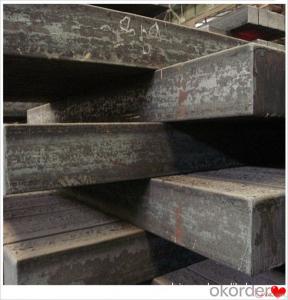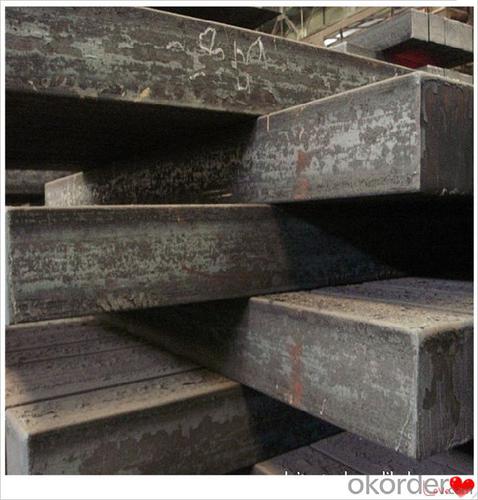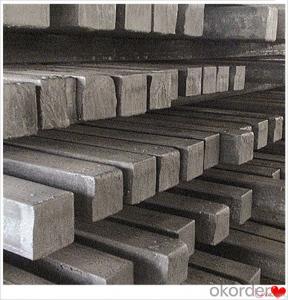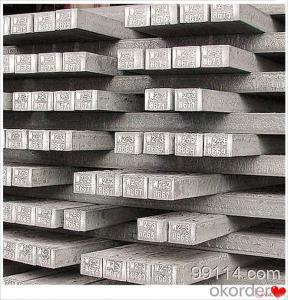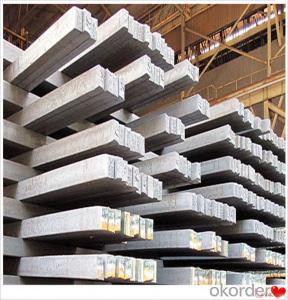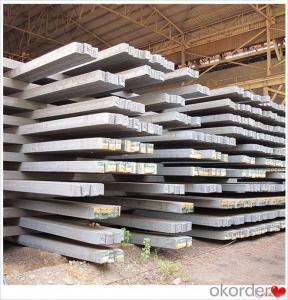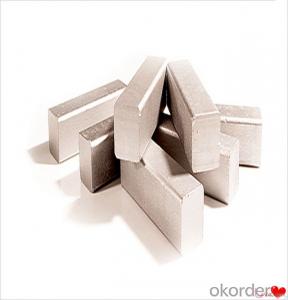Stainless Steel Billet Q235,Q255,Q275,Q345,3SP,5SP,20MnSi Made in China Supplier
- Loading Port:
- China main port
- Payment Terms:
- TT OR LC
- Min Order Qty:
- 20 m.t.
- Supply Capability:
- 200000 m.t./month
OKorder Service Pledge
OKorder Financial Service
You Might Also Like
Stainless Steel Billet Q235,Q255,Q275,Q345,3SP,5SP,20MnSi Made in China Supplier
Specification
Steel billet(ingot) by cogging or breakdown of semi-finished products, is the raw material of all kinds of steel mill. Billet section of square, round, flat, rectangular and abnormity of several kinds of, mainly related to the shape of rolled products.
CNBM Q235,Q275,Q345,3SP,5SP,20MnSi Billets Steel
Hot Rolled Steel Billets/ Mild Steel Bar/ Billet Steel
Specification (see below)
Standard: GB/JIS/ASTM
Size: 50*50mm-180*180mm
Length: 3-12mtrs or Customised
Steel material: Q235,Q255,Q275,Q345,3SP,5SP,20MnSi
Technique: Hot rolled
FOB Unit Ton Price $250-350 and Usually I will quote you CFR price.
MOQ: Usually 1000-10000MT/size
Shipment:By Container,Bulk Vessel
Packaging Details: bundles with steel strips or as customers's requirements
Delivery time: Usually within 30 days after the deposit/LC
Inspection:Third party inspection before loading.
Technical data
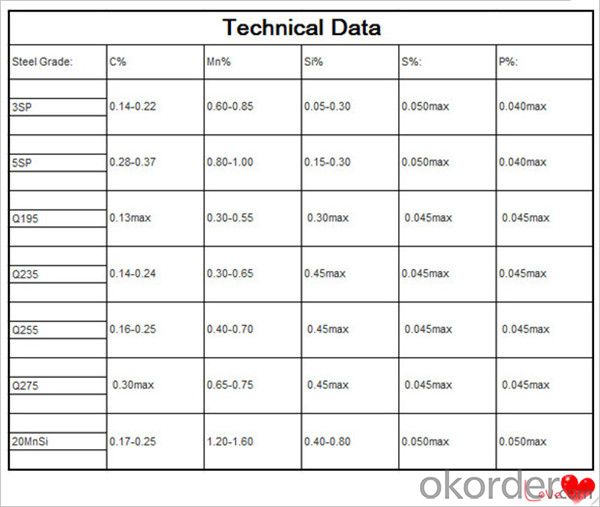
Feature Steel Billet
Rectangular billet continuous casting billet and mainly general carbon steel, low carbon low silicon cold-rolled material, high quality carbon structural steel, high strength low alloy steel, special steel, etc.
The billet is mainly divided into two kinds from the shape:
Slab: cross section width and height of the ratio of the larger, mainly used for rolling plate.
Billet: equal cross section width and height, or a huge difference, mainly used for rolling steel, wire rod. ,
Steel billets have distinct characteristics as compared with already furnished steel bars and products. Billets have a specific grain structure, which enables the metal to be processed more intricately. Steel billets are also known for their malleability and ductility, especially when exposed to varying temperatures during shaping and molding.
Packaging & Shipping
1. Packaging:
1) Small size: in bundles
2)Big size: in bulk
3)in plastic packing or as per customer requirement
2. Delivery time:
1) Normal size: within 7days send from warehouse directly
2) Special size: with 25-30days customer made for you
3. Trade terms:FOB/CFR/CIF
4. Shippment:
1) length:≤5.8m loaded in 20FT Container with 25-27tons
2) length:≤11.8m loaded in 40FT Container with 25-27tons
3) lengnth:≥12m shipped by bulk vessel, FILO terms
Steel Billet Images
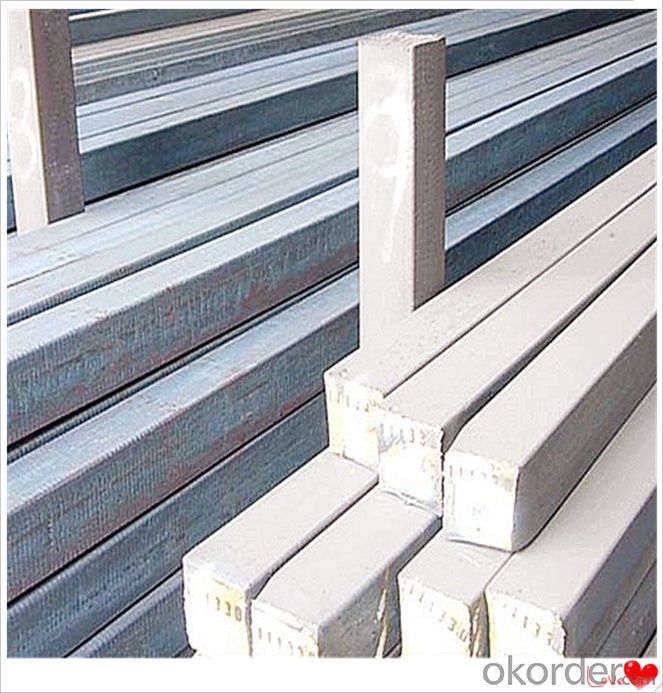
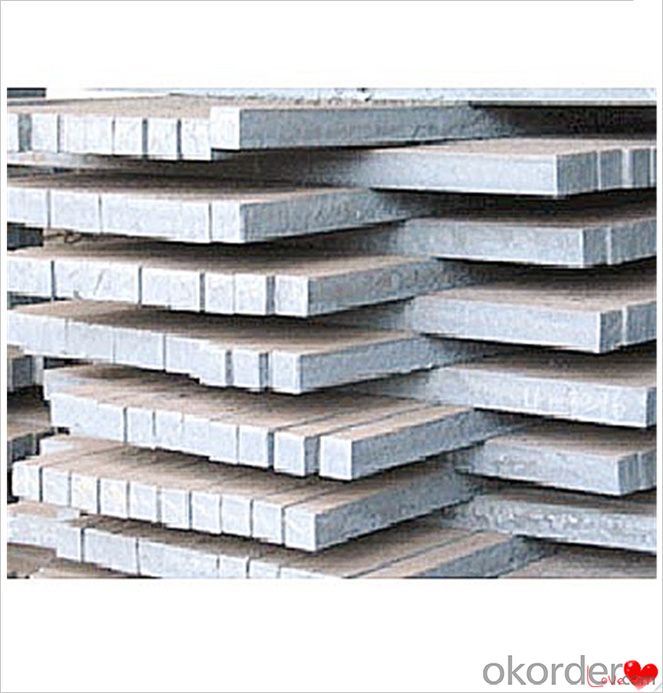
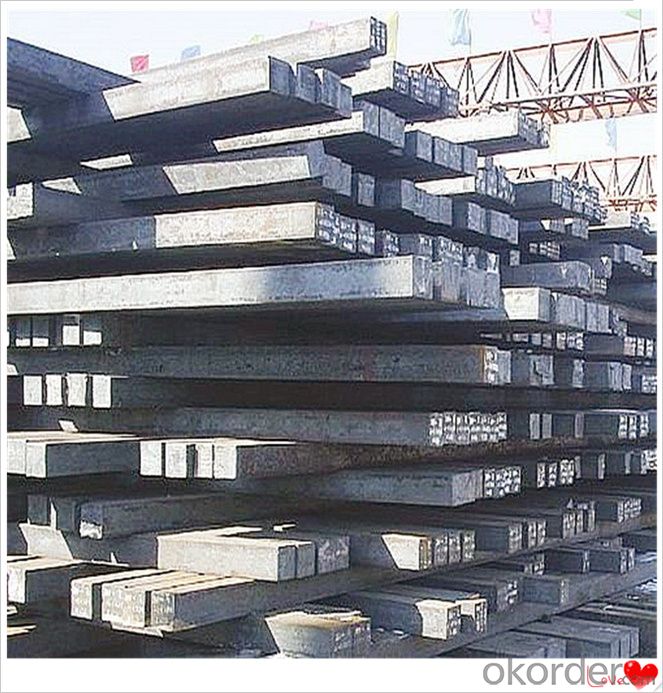
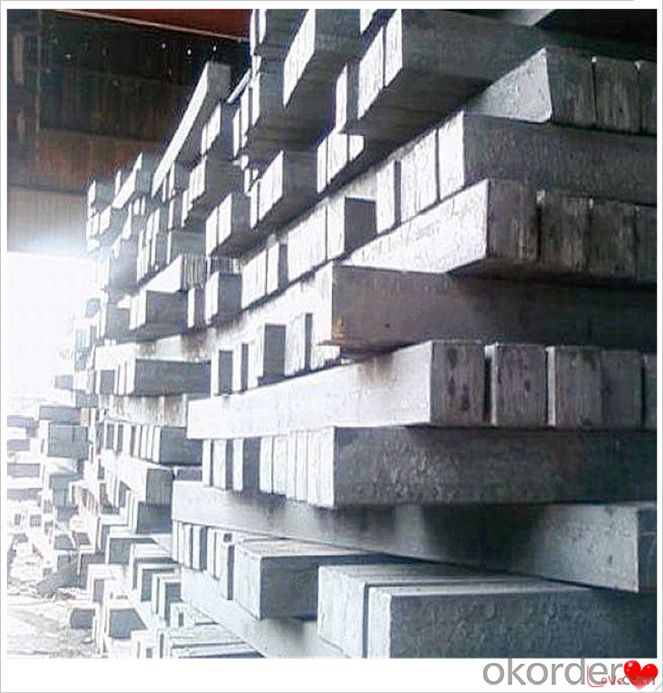
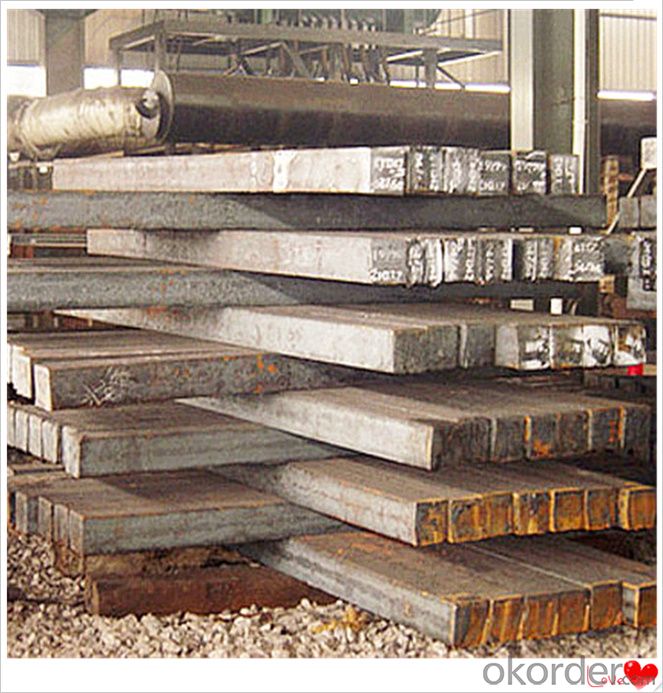
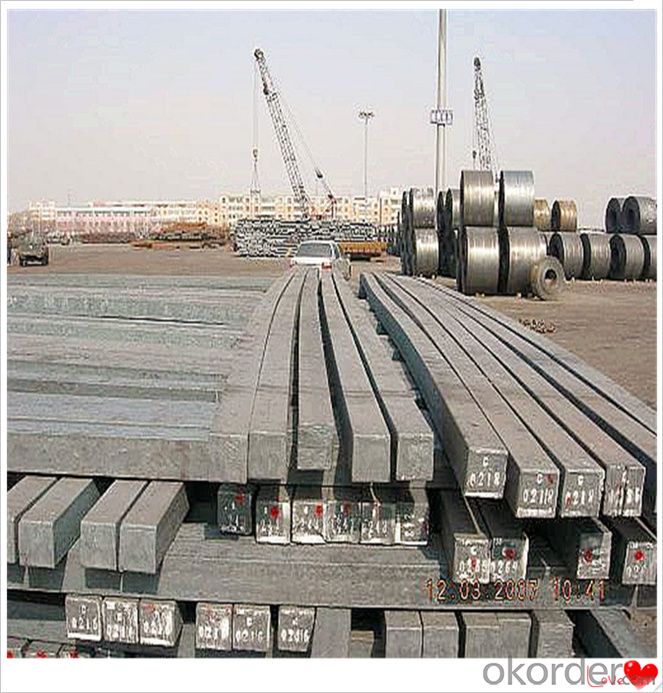
Processing
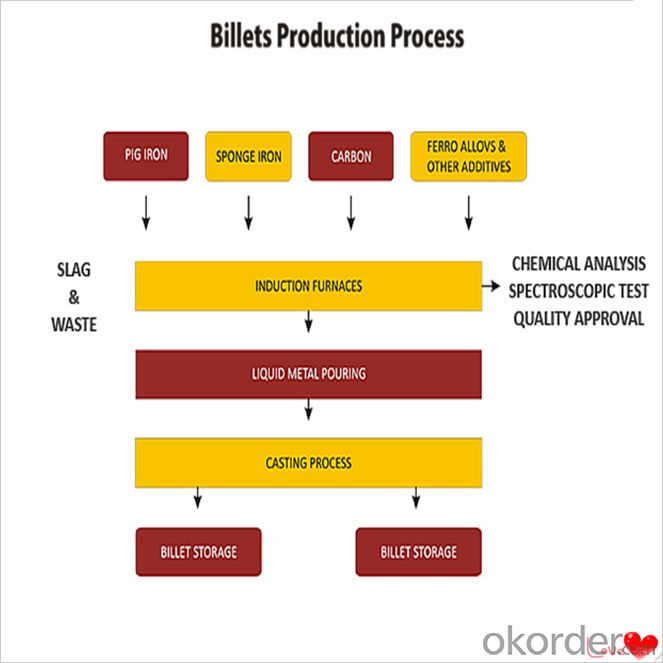
Usage-Billet Steel
Used for the plant, the bridge,shipment building high-rise building construction,lifting and transportation machinery, equipment manufracturing base building the support foundation pile manufacturing.
Billets, or ingots (as they sometimes referred to), are not of practical use until they have been formed into more functional shapes and sizes. While they have already been put in the furnace, they still require a series of shaping and molding procedures such as hot and cold working, milling and cutting before they are sold in hardware stores, or used for different applications. The unformed billets, however, can be used in striking currency such as coins and as reserves, similar to gold bars.
FAQ-Billet Steel
We have organized several common questions for our clients,may help you sincerely:
1) How about your company?
A world class manufacturer & supplier of castings forging in carbon steel and alloy steel,is one of the large-scale professional investment casting production bases in China,consisting of both casting foundry forging and machining factory. Annually more than 8000 tons Precision casting and forging parts are exported to markets in Europe,America and Japan. OEM casting and forging service available according to customer’s requirements.
2) How to guarantee the quality of the products?
We have established the international advanced quality management system,every link from raw material to final product we have strict quality test;We resolutely put an end to unqualified products flowing into the market. At the same time, we will provide necessary follow-up service assurance.
3) How long can we receive the product after purchase?
In the purchase of product within three working days, We will arrange the factory delivery as soon as possible. The pecific time of receiving is related to the state and position of customers.Commonly 7 to 10 working days can be served.
4)Do you have your own QC department?
Yes, we have, our QC department will inspect the goods during the process of mass production and after completion of production.
hot sale!!! Cast Steel Grades/ mild steel bar/ billet steel
(1): High quality steel with reasonable price.
(2): Wide excellent experiences with after-sale service.
(3): Every process will be checked by responsible QC which insures every product's quality.
(4): Professional packing teams which keep every packing safely.
(5): Trial order can be done in one week.
(6): Samples can be provided as your requirements.
- Q: What is the role of steel billets in the construction of power plants?
- Steel billets play a crucial role in the construction of power plants. These billets are semi-finished steel products that are used as raw material in various processes, including the fabrication of structural components and equipment for power plants. One of the primary applications of steel billets in power plant construction is in the production of structural steel. Structural steel is used to build the framework of power plant structures, such as the main building, turbine halls, reactor buildings, and cooling towers. Steel billets are melted, refined, and cast into various shapes and sizes to create the necessary structural components, including beams, columns, and trusses. These components provide the necessary support and stability to the power plant infrastructure. Additionally, steel billets are also used in the manufacturing of equipment and machinery required for power generation. For instance, they are used to produce turbine rotors, generator frames, and condensers. These components are essential for the operation of power plants and contribute to the efficient conversion of energy. Moreover, steel billets are utilized in the construction of storage tanks, pipelines, and ducts within power plants. These structures are necessary for the storage and transportation of various fluids, such as water, steam, and fuel. Steel billets are transformed into sheets, plates, and tubes to fabricate these components, which are designed to withstand high pressures and temperatures. Furthermore, steel billets are highly durable and possess excellent mechanical properties, such as strength and toughness. These properties make them suitable for withstanding the harsh operating conditions and loads experienced in power plants. They can withstand high temperatures, corrosion, and stresses, ensuring the structural integrity and longevity of power plant infrastructure. In summary, steel billets are essential in the construction of power plants as they are used to produce structural components, equipment, and machinery. Their durability, strength, and versatility make them a preferred material in this industry. The use of steel billets ensures the reliability and safety of power plants, contributing to the generation of electricity for various industries and communities.
- Q: What are the different types of surface defect detection methods for steel billets?
- There are various types of surface defect detection methods used for steel billets. Some of the commonly employed techniques include visual inspection, magnetic particle inspection, ultrasonic testing, eddy current testing, and laser scanning. 1. Visual Inspection: This is the simplest and most traditional method, where trained inspectors visually examine the surface of steel billets for any signs of defects such as cracks, scratches, or foreign material. 2. Magnetic Particle Inspection (MPI): MPI is a non-destructive testing method that uses magnetic fields and iron particles to detect surface defects. The billet is magnetized, and iron particles are applied to the surface. Any defect causes a leakage of magnetic flux, attracting the iron particles and forming visible indications. 3. Ultrasonic Testing (UT): UT involves the use of high-frequency sound waves to detect internal and surface defects in steel billets. A transducer emits ultrasonic waves into the billet, and the reflected waves are analyzed to identify any flaws or irregularities. 4. Eddy Current Testing (ECT): ECT utilizes electromagnetic induction to detect surface defects. A coil carrying an alternating current is placed near the billet's surface, which generates eddy currents. Any variation in the surface, like cracks or corrosion, alters the eddy currents, and this change is detected by the instrument. 5. Laser Scanning: Laser scanning is a relatively advanced method that uses laser technology to scan the surface of steel billets. The laser beam reflects off the surface, and a sensor analyzes the reflected light to identify any surface defects, such as scratches or dents. These different methods vary in terms of their sensitivity, speed, and cost-effectiveness. The choice of the appropriate surface defect detection method depends on factors such as the required level of accuracy, the type of defects to be detected, and the specific industry requirements.
- Q: How do steel billets contribute to the manufacturing of construction materials?
- Steel billets play a vital role in the manufacturing of construction materials. They serve as the raw material that is transformed into various steel products used in construction projects. Firstly, steel billets are the starting point for the production of different types of steel products such as bars, rods, beams, and sections. These products are essential components in the construction industry as they provide structural support and reinforcement. For example, steel bars are commonly used in the construction of reinforced concrete structures, providing strength and durability to the building. Furthermore, steel billets are also utilized in the manufacturing of pipes and tubes, which are crucial for plumbing, heating, ventilation, and air conditioning (HVAC) systems in buildings. These pipes and tubes ensure the efficient flow of water, gas, and air, contributing to the overall functionality and comfort of the structure. Moreover, steel billets are utilized in the production of steel sheets and plates, which are widely used in construction applications such as roofing, cladding, and flooring. Steel sheets and plates offer excellent strength, corrosion resistance, and aesthetic appeal. They are commonly used in high-rise buildings, warehouses, and industrial facilities. Additionally, steel billets are crucial in the production of prefabricated construction materials. Prefabrication involves the manufacturing of building components off-site, which are then transported and assembled on-site. Steel billets are used to create prefabricated steel frames, trusses, and panels, streamlining the construction process and reducing time and labor costs. In summary, steel billets are the foundation of the construction materials industry. They are transformed into various steel products that are essential for structural support, reinforcement, plumbing, HVAC systems, roofing, cladding, flooring, and prefabrication. The use of steel billets ensures the strength, durability, and functionality of construction materials, contributing significantly to the overall quality of construction projects.
- Q: How are steel billets used in the manufacturing of industrial valves?
- Industrial valves rely heavily on steel billets as a vital element in their production. These valves are critical devices utilized to regulate the movement of fluids and gases in a wide range of industrial operations. Steel billets, which are partially processed metal products, play a crucial role in the creation of these valves. The manufacturing process for industrial valves typically involves multiple stages, including forging, machining, and assembly. Steel billets are primarily employed during the forging phase of valve production. Forging is the technique of shaping metal by applying localized compressive forces using dies or hammers. Steel billets are heated to a specific temperature and then subjected to intense pressure, causing them to take on the desired shape. The use of steel billets in the forging of valves presents several advantages. Firstly, steel is renowned for its exceptional strength and durability, making it an ideal material for valves operating under high-pressure conditions. Steel billets supply the necessary raw material to create sturdy and dependable valve components. Furthermore, steel billets can be easily molded and shaped during the forging process. This allows manufacturers to craft intricate valve designs with precision and accuracy. The versatility of steel billets facilitates the production of valves in various sizes, shapes, and configurations to meet specific industrial requirements. Moreover, steel billets can undergo heat treatment after forging to enhance their mechanical properties. Heat treatment methods such as quenching and tempering can greatly improve the hardness, strength, and wear resistance of valve components. This ensures that the valves can withstand demanding operating conditions and deliver optimal performance over an extended period. In conclusion, the utilization of steel billets is indispensable in the manufacturing of industrial valves. These billets provide the raw material necessary for forging robust valve components, offering strength, durability, and versatility. Leveraging steel billets enables the production of high-quality valves capable of efficiently controlling the flow of fluids and gases in industrial processes.
- Q: What is the role of steel billets in the manufacturing of machinery?
- The versatile and desirable properties of steel billets make them a crucial component in machinery manufacturing. These semi-finished steel products, which are long and rectangular bars, serve as the raw material for creating different machinery components. To begin with, steel billets possess strength, durability, and excellent mechanical properties, making them perfect for heavy-duty machinery construction. By utilizing high-quality billets, manufacturers can ensure that the resulting machinery will have the necessary strength and structural integrity to withstand demanding operating conditions and loads. Additionally, steel billets can be easily molded and shaped into various forms and sizes through processes like forging, rolling, or extrusion. This versatility enables machinery manufacturers to produce intricate components with precise designs, ensuring accuracy and functionality. Moreover, the reliability and performance of machinery are enhanced by the uniformity and consistency of steel billets. During their production, billets undergo a controlled cooling process, resulting in a uniform microstructure. This minimizes the risk of defects and improves the overall quality of the machinery components made from them. Another significant aspect is the machinability of steel billets, which refers to their ease of cutting, drilling, or shaping using machine tools. This property allows manufacturers to efficiently produce machinery components with precise dimensions and tolerances, ultimately saving time and costs in the manufacturing process. Furthermore, steel billets can be heat-treated to enhance their mechanical properties, such as hardness, toughness, and resistance to wear or corrosion. This makes them suitable for critical machinery parts that require specific characteristics for optimal performance and longevity. In conclusion, steel billets are essential in machinery manufacturing due to their strength, versatility, uniformity, and machinability. They provide the necessary raw material for producing robust and reliable machinery components that can withstand demanding conditions and meet the performance requirements of various industries.
- Q: How do steel billets contribute to the manufacturing of defense equipment?
- Steel billets play a crucial role in the manufacturing of defense equipment. These billets are essentially semi-finished steel products that are used as raw materials in various manufacturing processes. Defense equipment requires materials that are strong, durable, and can withstand extreme conditions. Steel billets meet these requirements perfectly. One of the primary uses of steel billets in defense manufacturing is in the production of armored vehicles and tanks. These vehicles need to be highly resistant to ballistic threats and provide protection to the soldiers inside. Steel billets, with their exceptional strength and toughness, are an ideal choice for manufacturing the armor plates used in these vehicles. The billets are transformed into thick, hardened steel plates that provide excellent ballistic resistance and can withstand high-velocity impacts. Additionally, steel billets are used in the production of weaponry, such as firearms and missiles. These weapons require materials that can withstand the intense pressure and heat generated during firing or launching. Steel billets, with their high tensile strength and heat resistance, provide the necessary foundation for creating barrels, chambers, and other critical components of these weapons. Moreover, steel billets contribute to the manufacturing of defense equipment by being used in the production of various support structures and infrastructure. This includes military facilities, such as hangars, barracks, and storage facilities, which need to be robust and secure. Steel billets are transformed into beams, columns, and other structural elements that provide strength and stability to these buildings. In summary, steel billets are an essential component in the manufacturing of defense equipment. Their strength, durability, and ability to withstand extreme conditions make them ideal for producing armored vehicles, weaponry, and support structures. By utilizing steel billets, defense manufacturers can ensure the production of high-quality and reliable equipment that meets the stringent requirements of the defense sector.
- Q: What are the different surface finishing techniques used for steel billets?
- Steel billets commonly undergo various surface finishing techniques to enhance appearance, improve corrosion resistance, and provide a protective coating. The following are some of the techniques employed: 1. Hot Rolling: Steel billets are passed through a series of hot rollers to shape them and create a smooth surface finish. This method is commonly used for producing steel plates, sheets, or structural shapes. 2. Cold Rolling: Similar to hot rolling, this technique is performed at room temperature. It results in a smoother surface finish, increased dimensional accuracy, and improved mechanical properties of the steel billets. 3. Shot Blasting: Steel billets are bombarded with high-velocity metallic or non-metallic particles to remove scale, rust, and other contaminants from the surface. This process ensures a clean and uniform appearance. 4. Pickling: Steel billets are immersed in an acid solution to eliminate oxides, scale, and rust from the surface. This method achieves a clean and smooth surface finish, ready for further processing or coating. 5. Galvanizing: The steel billets are coated with a layer of zinc using hot-dip galvanizing, electro-galvanizing, or mechanical galvanizing methods. This coating provides excellent corrosion resistance and protects against environmental factors. 6. Painting: A layer of paint or protective coating is applied to the surface of the steel billets. This technique enhances appearance and provides protection against corrosion and weathering. 7. Passivation: A chemical process is utilized to remove free iron or iron oxides from the surface of steel billets. This improves corrosion resistance, leaving a clean and passive surface. 8. Polishing: Abrasive materials or compounds are used to smoothen the surface of steel billets. This technique achieves a high gloss or mirror-like finish, enhancing the aesthetic appeal of the steel. Each of these surface finishing techniques offers unique advantages and is selected based on the specific requirements of the steel billets, including appearance, corrosion resistance, and functionality.
- Q: How do steel billets contribute to the defense industry?
- Steel billets play a crucial role in the defense industry by providing the necessary raw material for manufacturing various defense equipment and vehicles. These billets are essentially semi-finished steel products that are used as a starting point for further processing and shaping into specific components. One of the primary applications of steel billets in the defense industry is in the production of armored vehicles. These vehicles require a high level of protection to withstand potential threats such as ballistic attacks or explosive devices. Steel billets are used to manufacture the armor plates and panels that provide the necessary strength and resilience to these vehicles. Additionally, steel billets are utilized in the production of various weapon systems, including firearms, artillery guns, and missiles. The strength and durability of steel make it an ideal material for constructing the barrels, chambers, and other critical components of these weapons. The ability of steel to withstand high temperatures and pressures is crucial for ensuring the reliable and efficient performance of these defense systems. Furthermore, steel billets are also used in the manufacturing of naval vessels, submarines, and aircraft carriers. These military ships and submarines require steel components that can withstand the harsh marine environment, including corrosion, impact, and extreme temperatures. Steel billets are used to produce these components, ensuring the structural integrity and longevity of these vessels. In summary, steel billets are indispensable to the defense industry as they provide the essential raw material for manufacturing a wide range of defense equipment. Their strength, durability, and versatility make them ideal for producing armored vehicles, weapon systems, naval vessels, and other defense-related components. By contributing to the production of these crucial assets, steel billets play a vital role in strengthening national defense capabilities.
- Q: What are the different sizes and shapes of steel billets?
- Steel billets are available in a range of sizes and shapes, which are determined by their intended use and production method. Typically, steel billets have a rectangular shape with different dimensions. The commonly used sizes vary from 100mm x 100mm to 300mm x 300mm, and their lengths typically range from 3 to 12 meters. Apart from the standard rectangular shape, steel billets can be manufactured in various other shapes to meet specific requirements. Examples of these shapes include round billets, square billets, and octagonal billets. Round billets have a circular cross-section, while square billets have four equal sides. Octagonal billets, on the other hand, have eight sides, which contributes to increased surface area and improved thermal conductivity. The choice of size and shape for steel billets is influenced by multiple factors, including the type of steel being produced, the desired strength and durability, and the manufacturing process. These factors have an impact on the properties of the final product and its ability to withstand specific applications, such as construction, automotive manufacturing, or machinery production.
- Q: How do steel billets contribute to the chemical industry?
- Steel billets are a crucial raw material in the chemical industry as they are used in the production of various chemical equipment and machinery. These billets serve as a foundation for manufacturing components such as pipes, valves, tanks, and reactors, which are essential in carrying out chemical processes. Their strength, durability, and resistance to high temperatures make steel billets an ideal choice for constructing reliable and safe equipment used in the chemical industry.
Send your message to us
Stainless Steel Billet Q235,Q255,Q275,Q345,3SP,5SP,20MnSi Made in China Supplier
- Loading Port:
- China main port
- Payment Terms:
- TT OR LC
- Min Order Qty:
- 20 m.t.
- Supply Capability:
- 200000 m.t./month
OKorder Service Pledge
OKorder Financial Service
Similar products
Hot products
Hot Searches
Related keywords
